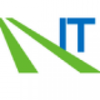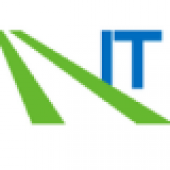All-Flash Arrays: What Users Say About Top Vendors
IT Central Station users cite pros and cons of all-flash storage arrays from HPE, NetApp, and more.
August 9, 2017

The all-flash array has matured to the point where it is now powering much of the growth in the enterprise storage business. Advances in the design, performance and management capabilities of solid state drive (SSDs), coupled with declines in cost, make flash storage viable for many workloads. Enterprise storage is relentlessly demanding, though, so potential buyers need to think critically when they choose an AFA.
According to product reviews by IT Central Station users, the top all-flash array vendors on the market are Hewlett-Packard Enterprise with 3PAR flash storage, NetApp, Tintri, Nimble Storage (now part of HPE), Pure Storage, and IBM.
Based on their experience with AFAs from these vendors, contributors at IT Central Station shared their thoughts, including benefits the products provide and areas where they could improve.
HPE 3PAR
Brent Dunington, systems architect at a university, described his company’s decision-making process for choosing HPE 3PAR flash storage:
“We went through a whole data center refresh cycle and one of the things is that we needed to look at our disk system. Everything was for spinning disks, so we decided to make the leap to an all-SSD data center. We brought in all the competitors, went through an RFP process, and 3PAR came ahead.”
A system administrator at an insurance company shared how HPE 3PAR compares to other storage solutions he has used in the past:
“The speed of the Flash Array is better than what we had with the previous products. We like their blades better than the Cisco blades. It is easier to manage.”
Eric Slabbinck, project manager at a government agency, suggested specific features that could improve HPE 3PAR:
“From a personal point of view, what would interest me is a mechanism that detects file rot, i.e., whether a file or sector has become corrupt, e.g., as a result of copying the sector to other locations from the original location.”
NetApp
A lead storage/system engineer at a financial services firm described how NetApp All Flash has helped his organization:
“We have been looking for a flash solution that scales horizontally along with a proven application integration stack. NetApp has been helpful and stable, and enabled us to buy capacity as needed, as well as help in quickly refreshing UAT/DEV environments as needed.”
An R&D executive supervisor at a media company explained what he values most in All Flash FAS:
“It is very user friendly. Someone in my position needs to be able to bring up the system quickly, efficiently, and shut it down if there's a power outage quickly and efficiently without having trouble. It also supports VMware, which is what we use; but we use the NetApp as our only filer.”
A computer systems engineer at a government agency wrote about product improvements that he’s looking forward to using once they’re released by NetApp:
“We're interested or excited in getting to 32 GB fiber channel. With their new models, NetApp will be moving to 32 GB fiber. That would potentially raise performance and or lower our port counts, simplifying or minimizing the amount of cables we need to put in places.”

datacenterconcept.jpg
Tintri VMstore
Mike Geller, network administrator at a healthcare company, wrote about the value Tintri has added to his organization:
“Tintri has a great web UI that allows you to view performance of individual VMs, as well as performance of the overall VMstore. Code upgrades are really simple.”
Donald Lopez, IT manager at a tech services company, shared how his organization has benefitted from Tintri:
“Immediately upon installation, we benefited from a 5X speed/performance increase in the overall system for all of our VMs migrated to the unit from an old unreliable Synology storage unit.”
Raymond Handels, system engineer at a university, weighed in on how Tintri could further improve its storage solution:
“Speed of our VDI machines. We have a very high login and logout ratio and machines are being refreshed instantly so we have a constant boot storm on our storage.”
Nimble Storage
Brian Butler, senior network analyst at a financial services firm, explained how deploying Nimble Storage benefitted his organization:
“It has vastly improved the responsiveness of our servers. It adds snapshots to help with our DR. The snapshots are sent across the way into our DR site, so we have DR copies of everything. It’s all around just improved the flow of everything.”
Paul Sabin, senior network and infrastructure manager at a legal firm, noted a shortcoming with Nimble Storage:
“I really would like to see synchronous replication. This is something that when we have multiple arrays in our environment and being able to do something like a zero RPO. Being a law firm, we really want our data to be protected all the time.”
Pure Storage
An information systems analyst at a pharma/biotech company described the value in Pure Storage’s VDI capabilities:
“For VDI, there's a consistent user experience. Users don’t switch to VDI if it's not at the same speed as a laptop or desktop, and Pure Storage provides that.”
Andrea Spinazi, chief of information, facility, purchasing and services manager at Roma Metropolitane S.r.l., explained what he finds most beneficial with Pure Storage:
“The most valuable features are extremely low latency, high IOPS with VMware, inline deduplication and compression….We liked the non-disruptive downgrade from FA-420 (POC) to FA-405 in production and the non-disruptive upgrade from FA-405 to M20.”
However, Leonardo Perez, deputy head of IT at a government agency, warned of a Pure Storage drawback:
“Be careful with the type of information you allocate to this storage. The solution is good for virtual machines and databases, but not for images and videos. Compression rates are not good for these types of data.”
IBM FlashSystem
A design engineer at a recruiting/HR firm described the features he values most in IBM FlashSystem:
“The performance is really good. From an operations perspective, definitely the ease of use stands out. Compared to other products and other vendors, it's much, much easier.”
A senior solutions architect at a tech services company shared how his company has benefitted from IBM FlashSystem:
“The V9000 incorporates both the Spectrum virtualization layer as well as flash technology. It does it in such a unique manner that it provides super-fast response times. There's low latency for the customers. It's very simple and easy.”
Joseph King, CTO at CAS Severn, suggested a way IBM FlashSystem could improve:
“We think that IBM has to continue to invest in additional data reduction capabilities, which are on their roadmap. Being able to use flash most efficiently, where the least amount of data is physically being stored on the V9000, is really where IBM needs to make additional investment. They are doing that.”
You can read more all-flash array reviews on IT Central Station.
About the Author
You May Also Like




